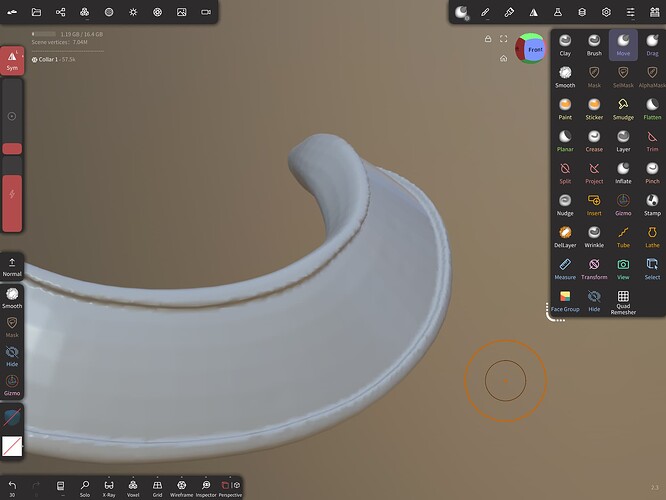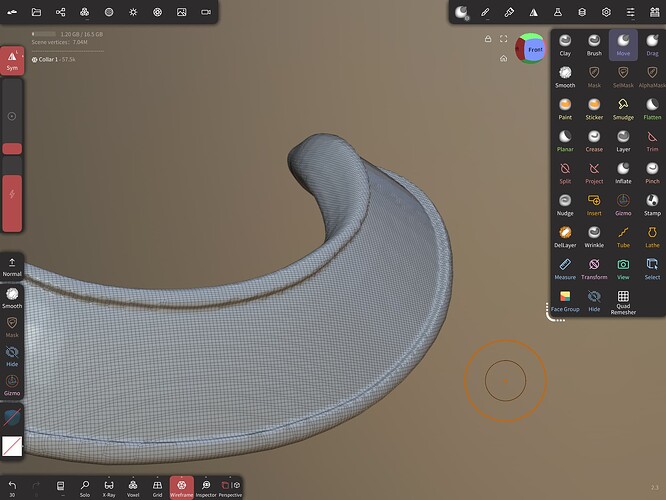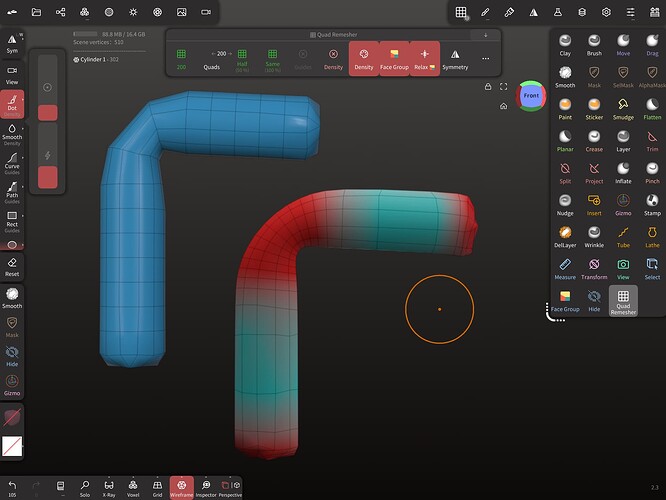I’m with Holger in citing Quad Remesher as an invaluable tool.
Being able to control or re-work how the wireframe (topology) flows is absolutely a critical thing.
While you may have a target shape in mind and work towards sculpting it, you’ll hit a brick wall when the underlying wireframe LIMITS you from efficiently reaching those goals. In this example, the lumpy-frumpy edges of this collar isn’t as sharp or smooth as it can be…
And THAT is primarily due to the wireframe mesh it’s comprised of. You can subdivide it or re-voxelize it, but the DIRECTION of those mesh fibers remain mostly unchanged — almost always parallel to the Cartesian axes. At its current Voxel Remeshing resolution of 200, this object is already at 57,500 vertices. Subdividing the mesh twice to be able to sculpt sharper edges pushes this single object close to a million vertices.
In a scene that might have a few hundred different million-vertice objects, this spells unnecessary heaviness.
Quad-Remesher intelligently analyzes direction of certain sculpted features and creates a better mesh to flow with your features. In cases where it’s not lock-step with the direction you intended, guidance curves and density painting can be invoked to give a better outcome.
The Quad-Remeshed copy on top has mesh fibers flowing WITH the edges side-stepping that lumpiness…achieving this with only 1944 vertices! Subdividing this once (7700 vertices) will provide all the sculpting resolution to make razor-sharp edges.
On medium-to-low-res character models, having a poor/uncontrolled topology mesh layout results in limb joints not bending cleanly or smoothly; or sculpting a grin on a face keeps giving a jagged crease line.
A blue tube below could easily be a low-res character leg. Blur-mask half of it, Gizmo bend the free half and the sucky result needs to be accepted. To fix THIS, either SubDivide the entire object swelling the vertices from 200 to 800 -or- do a Voxel Remesh with a resolution so high that the “LEGO bricks” get small enough to hide the jaggy bend.
Quad-Remesh elegantly resolves this by permitting the knee area to be painted red requesting a denser mesh and other areas be green to indicate a sparse mesh. The same blur-mask, Gizmo bend gives a far better result when the mesh is better distributed to start with. Here the vertice count stays at 200.
Quad Remesher, worth every dang penny of its add-on price in Nomad. Of course, you can always get QR for FREE by switching to ZBru$$$$$$$$h. 





